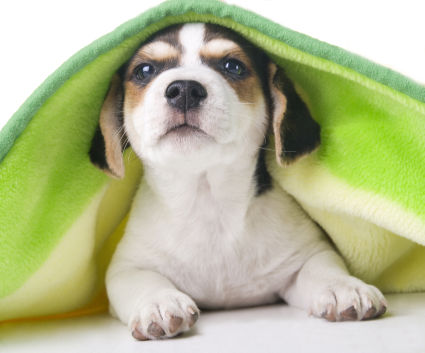The sense of smell is of utmost importance to a dog’s healthy lifestyle. Dogs use the information they gather from smelling the world around them to interpret what is going on.
While humans rely a lot on sight, canines use their noses to determine the important things in life. Whether it is a source of food, other animals, danger, sexual information, disease, an oncoming thunder storm or a history of what has taken place in the area, dogs make use of their advanced sense of smell to learn about their environment.
In fact, the more they wiggle their noses, the more they are capable of detecting. That’s because dogs uses their noses as antennae.
Scientist Alexandra Horowitz has spent years investigating the canine sense of smell. Her work is easily summed up by a line she wrote. “You may be the master, but I nose all your secrets!” is something a dog just might say if he or she could talk.
The reason dogs are able to detect much more by the sense of smell than can humans is that dogs have a lot more nasal membrane area than we do. While most humans have about 65 square inches of nasal membrane, dogs have about 900 square inches to work with. The nasal membrane is loaded with olfactory receptors, which are the specialized cells that allow dogs to detect smells.
Dr. Mark Plonsky, a dog trainer at the University of Wisconsin, suggests that the bigger a dog’s nose and the longer the muzzle, the sharper the sense of smell.
Add in the fact that dogs tend to wiggle their nostrils like antennas to pick up scent information, you have a very refined smelling machine in the form of a furry friend.
It doesn’t matter that a dog’s brain is only one-tenth the size of a human brain. The part that controls smell is 40 times larger than that which is found in humans. While humans have approximately 5,000,000 scent glands, dogs can have anywhere from 125,000,000 to 300,000,000 scent glands. The more scent glands, the better the animal’s sense of smell.
In addition, dogs are able to use their wet noses to hold scent particles. The mucous helps detain the smells that allow the dog to determine what is going on around him or her.
A dog’s sense of smell is so good that it enables them to do more than detect odors. They can actually sense the change in a smell over time. For example, your dog can detect whether you have just bathed or you are covered in sweat. Dogs are actually capable of smelling footsteps and being able to determine if the person or animal was just there or if it has been hours since someone walked the path. While they may not have a sense of time, their sense of smell does allow them to determine if the rabbit was just there or if it was days since it passed by.
So the next time you see Rover wiggling his nose as he holds his head in the air, you’ll know he’s on a mission to gather information.






0 Komentar